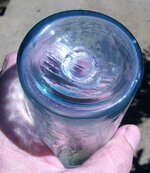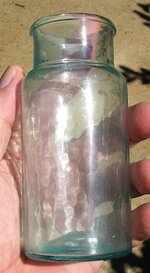Dug
Bronze Member
- Feb 18, 2013
- 1,138
- 1,263
- Detector(s) used
- XP Deus/Sovereign GT.
- Primary Interest:
- Relic Hunting
Just finished tumbling an open pontil food jar. Not sure why I didn't notice before, but this bottle has about five grooves left in the base across the open pontil scar.
As a WAG, was this done by the bottle maker to score off excess glass from the scar while the bottle was still hot?


As a WAG, was this done by the bottle maker to score off excess glass from the scar while the bottle was still hot?


Amazon Forum Fav 👍
Last edited:




